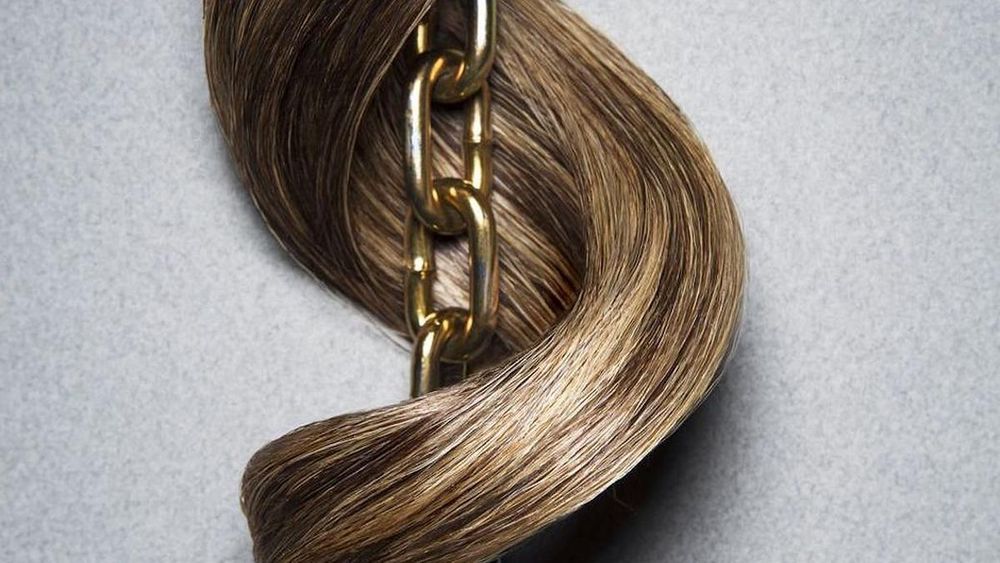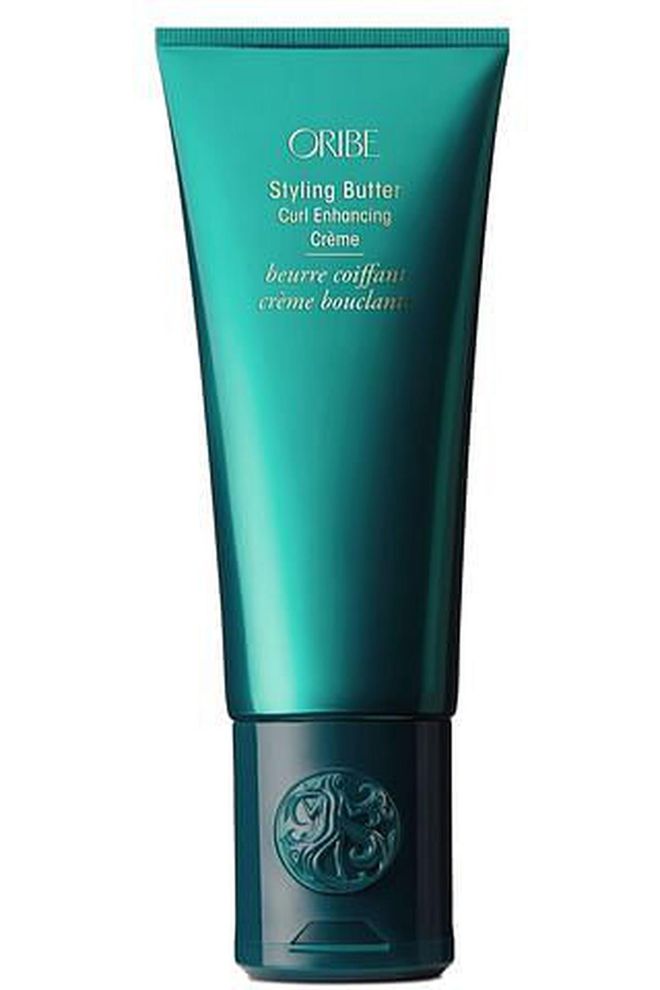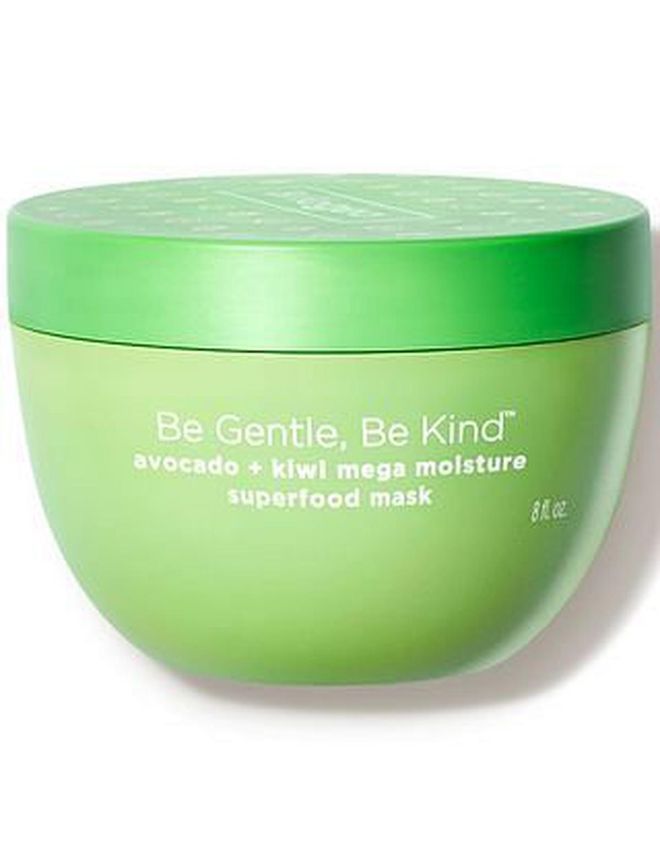Low-Porosity Hair Might Be The Reason For All Your Breakage
How your hair's ability to absorb moisture can be a good—and bad–thing


Photo: Andreas Kuehn/Getty Images
Hair only looks simple. Start colouring it—or bleaching, relaxing, flat-ironing, braiding, etcetera—and you’ll quickly realise that the littlest thing can cause breakage. These days, thanks to products like Olaplex, managing the inner workings of your hair strands has become an easy, at-home task. But it turns out there is much more than just building bonds and calming the cuticle. Low-porosity hair might be the reason you’re experiencing major breakage, or rough, brittle strands. Then again, it might also be the key reason your hair is looking super glossy and healthy. To figure out just how hair porosity works, we spoke with the experts behind some of our favourite haircare brands and celebrity hairdos.
Related article: 9 Hairstyles To Wear With A Face Mask
What Is Low-Porosity Hair?
“Low-porosity hair refers to hair that has a harder time absorbing and retaining moisture and oils,” says Ed Valentine, NatureLab. Tokyo's Managing Director. “Hair is comprised of a collection of dead cells that are arranged in a distinct, three-layered pattern: the cuticle, the outermost layer; the cortex, the thick inside layer which contains the pigments that give your hair its colour; and the medulla, the innermost layer of the hair shaft. With low-porosity hair, the cuticles are tightly packed together, which makes it harder for water, as well as conditioning products alike, to deliver moisture to the hair shaft.”
Wait—So What’s Hair Porosity?
In that same vein, hair porosity in general refers to the hair’s ability to absorb moisture—in the form of water or haircare—as well as its ability to keep that hydration locked in place. “Hair porosity impacts how well products absorb in your hair, how long it takes for your hair to air dry, how shiny your hair looks, how well your hair takes to coloring, your level of frizziness, and more,” notes Valentine.
Related article: The 10 Biggest Fall 2020 Hair Trends
What Are The Signs Of Low-Porosity Hair?
Low hair porosity can happen to you whether you have bouncy coils or hair as straight as a ruler. “Any hair type can have low-porosity hair,” says Prose’s Director of Education, Faith Huffnagle. “Low-porosity hair generally looks shiny (because hair cuticles lay very flat), takes a very long time to dry, and can look dry even after products are applied.”
Shiny hair? Isn’t that a good thing? The answer’s yes—and in case you’re wondering, low-porosity hair can be perfectly normal, since it might just be the natural state of your hair. “Low-porosity hair doesn't have to be a pain if you understand your strands are low porosity!” Huffnagle continues. “This hair is essentially stronger and 'healthier' looking than high-porosity hair and may not endure split ends as often (of course, that is if you aren't styling with heat regularly).”
Related article: Finding More Gray Hairs? You're Not Alone
Take note of that. Like many hair woes, over-processing or too much heat can be the cause of not-so-great porosity. “This will leave the hair cuticle damaged, so it doesn't close back up to lock-in moisture from masks or treatments,” explains celebrity hairstylist Laura Polko—adding that brittle hair, end breakage, and hair “overall feeling rough” can all be warning signs.
How Do You Take Care Of Low-Porosity Hair?
Born with it or not, caring for low-porosity hair is like fine-tuning your own diet—you need to watch what goes into your haircare products if you want to keep it genuinely healthy. Valentine recommends steering clear of heavy oils, butters, and sulfates; Polko suggests minimising overexposure to drying alcohols (and suggests subbing in pomade for hairspray).
Related article: What Causes Balding And What Can You Do About It
“This hair type should be careful with silicones—they can build up on the hair shaft and increase the 'water-blocking' effect that impacts moisture absorption,” adds Huffnagle. “Cutting back on products containing proteins can be beneficial to this hair type.”
Silicon-free Haircare

Living Proof Perfect Hair Day Shampoo

Oribe Styling Butter Curl Enhancing Creme
Your newly improved hair routine doesn’t stop there, too. How you apply these products matters quite a bit. “To combat some of the dryness this hair type tends to experience, use heat (a hooded dryer, a heated turban) when applying deep-conditioning treatments to help the hair cuticle soften and lift slightly, for products to penetrate into the hair's cortex. Also, applying products to damp hair while in the shower allows the steam to soften the hair while your hands manually work the product into the lengths,” says Huffnagle.
Related article: 8 Dandruff Shampoos That Will Soothe Your Scalp in No Time
Which Ingredients Are Best For Low-Porosity Hair?
Now that you know why your hair is the way it is, what to avoid, and how to best care for it—it’s time to bust out the shopping cart. Valentine recommends shopping for products that are high in humectants such as glycerin or honey. “These ingredients can penetrate the hair cuticle more easily than products that contain oils,” he explains. (Still love what a great oil does for your hair? Polko recommends argan oil for low-porosity hair.)
Humectant for Hair

Briogeo Avocado & Kiwi Mega Moisture Superfood Hair Mask
Then, integrate your new moisturisers into your regular maintenance routine. “Since low-porosity hair has a more difficult time absorbing and retaining moisture, a weekly deep conditioning treatment is a great idea for helping to maintain the overall health and moisture levels in the hair,” says Valentine.
This story first appeared on Harper's BAZAAR US.